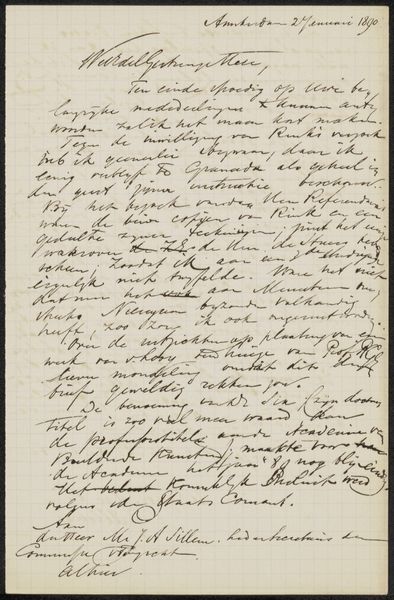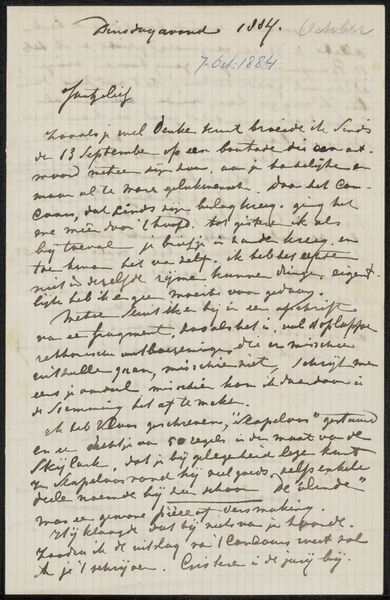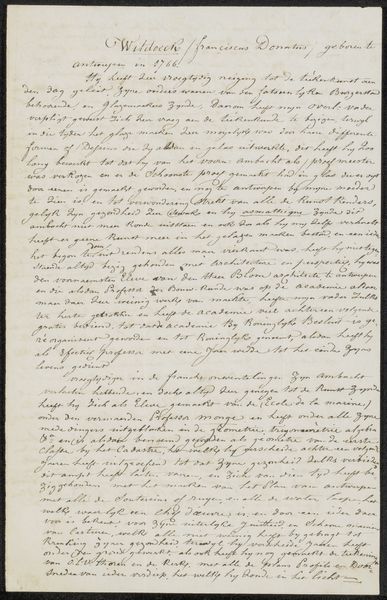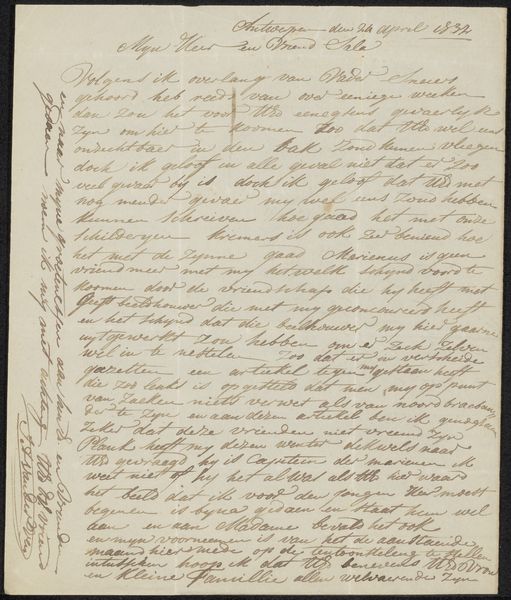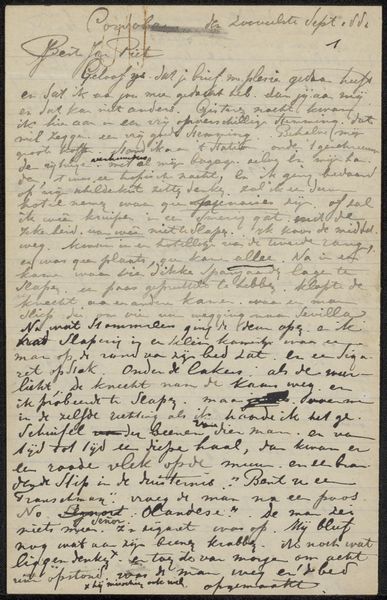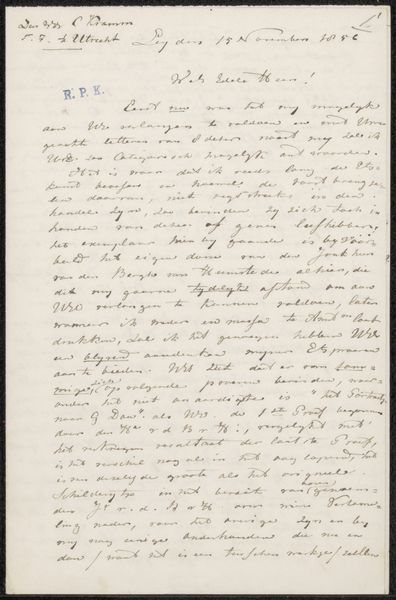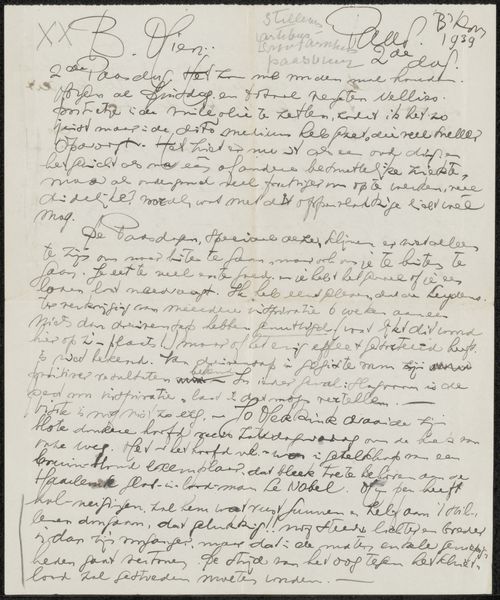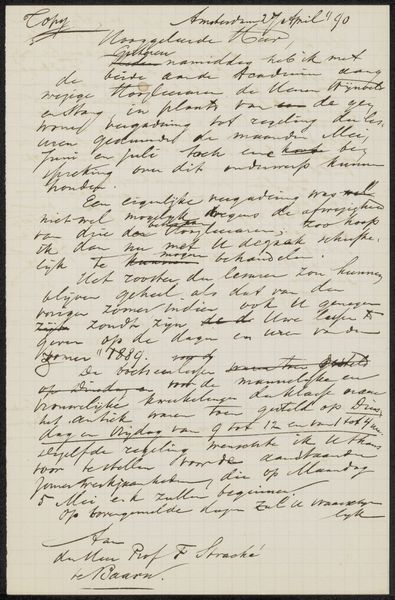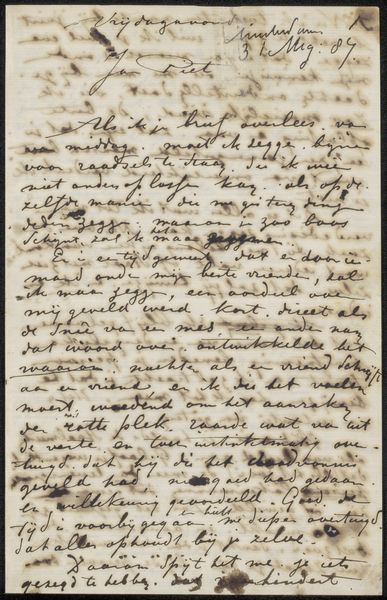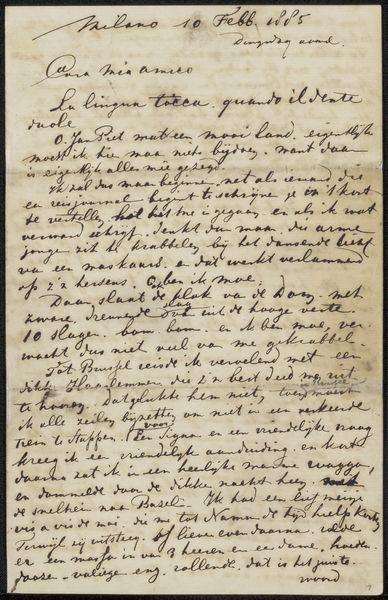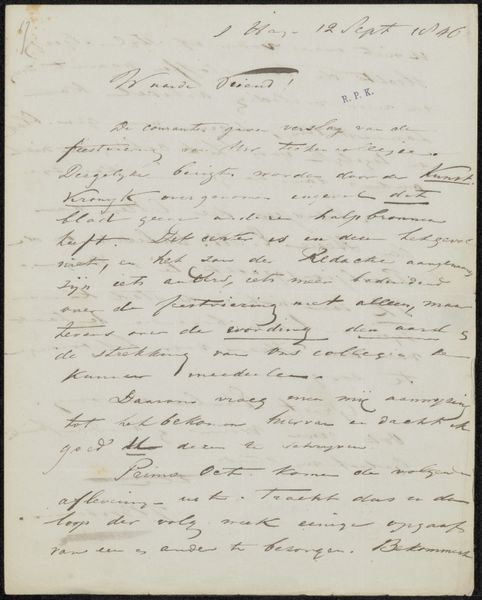
drawing, ink, pen
portrait
drawing
ink drawing
ink
linocut print
pen
Copyright: Rijks Museum: Open Domain
This is a letter, written in 1886 by the Dutch artist August Allebé. You can see the quick, flowing marks of his pen across the page. Think about the labor involved: the sourcing and preparation of the ink, likely a mix of soot and gum arabic, and the paper itself. It’s a social transaction as much as a material one. Paper was becoming more widely available at this time, thanks to industrial processes, allowing for increased communication and exchange of ideas. The writing itself, so carefully formed, speaks to the importance of penmanship as a skill, and the time dedicated to mastering it. Consider too, the social context of a handwritten letter. In an era before instant communication, the act of writing was a deliberate, thoughtful gesture, a way of forging connections across distance. The letter embodies a social relationship, made tangible through ink and paper. It challenges our usual definitions of fine art, reminding us that making is always meaningful.
Comments
No comments
Be the first to comment and join the conversation on the ultimate creative platform.
